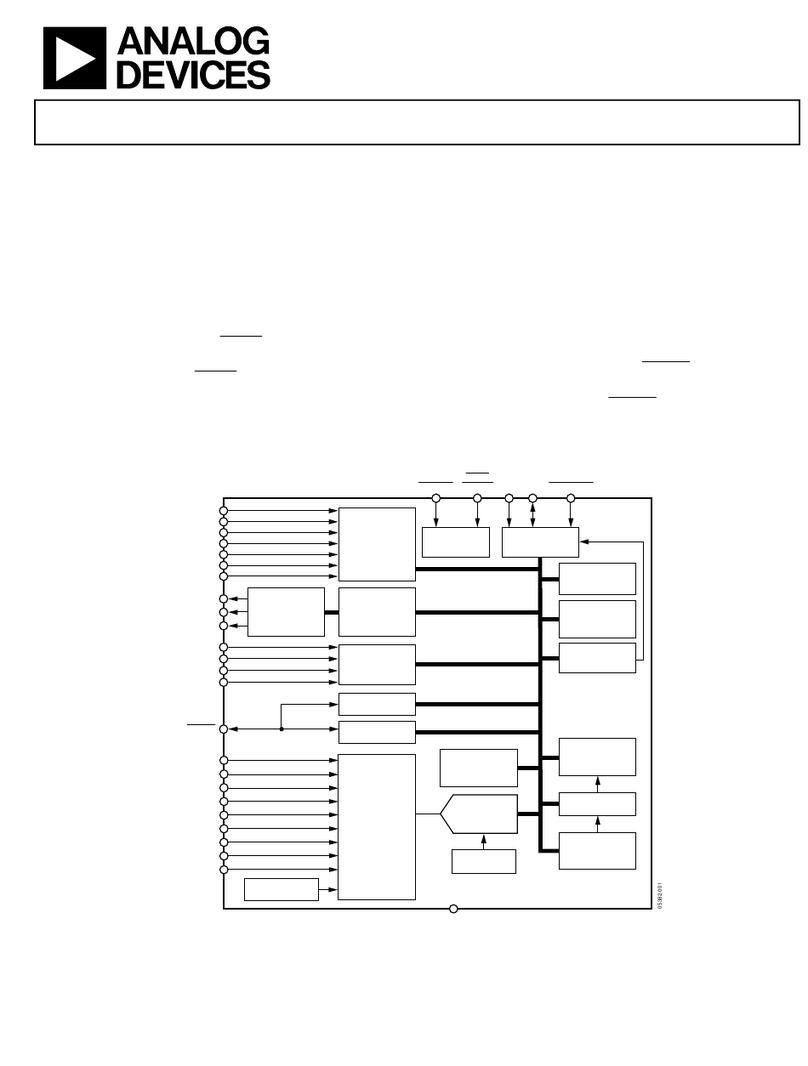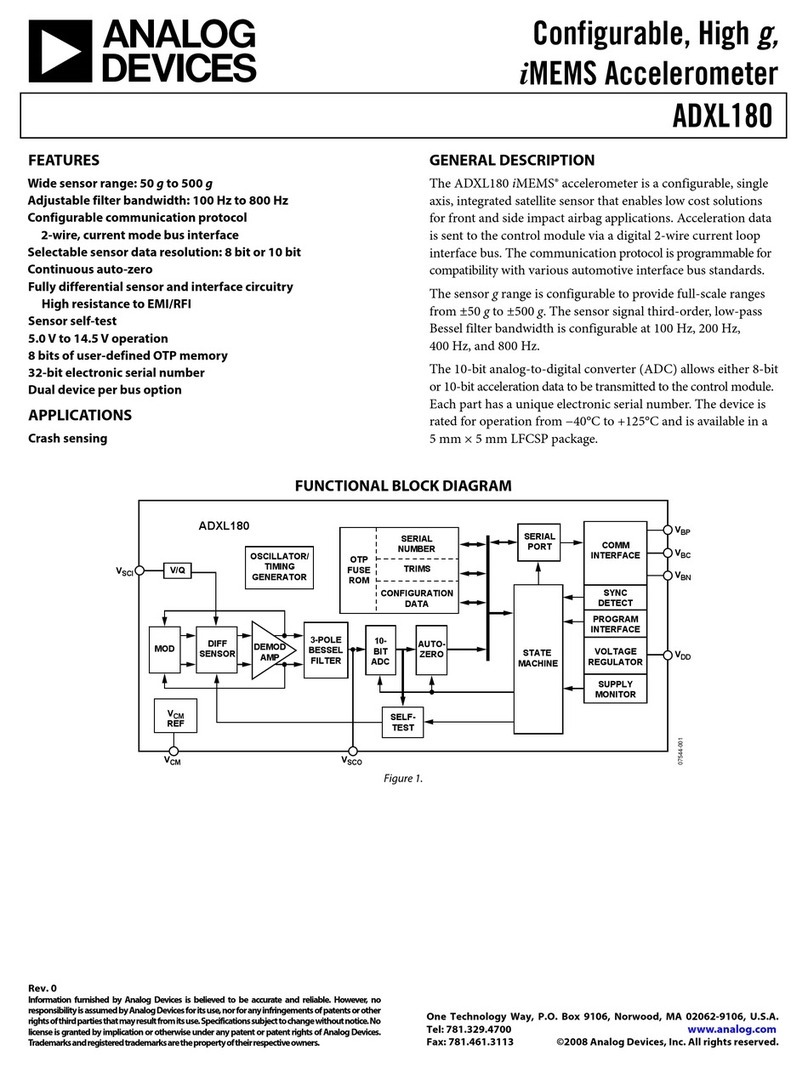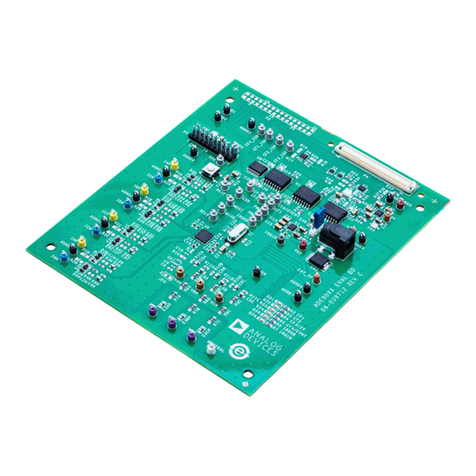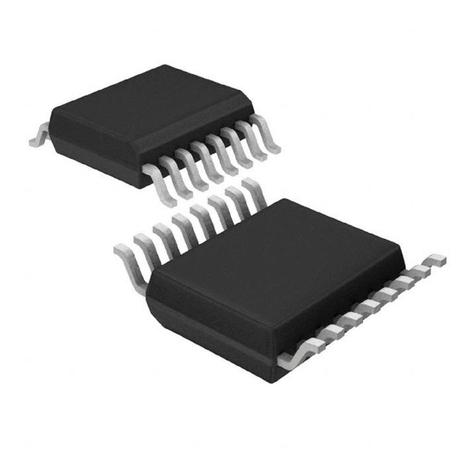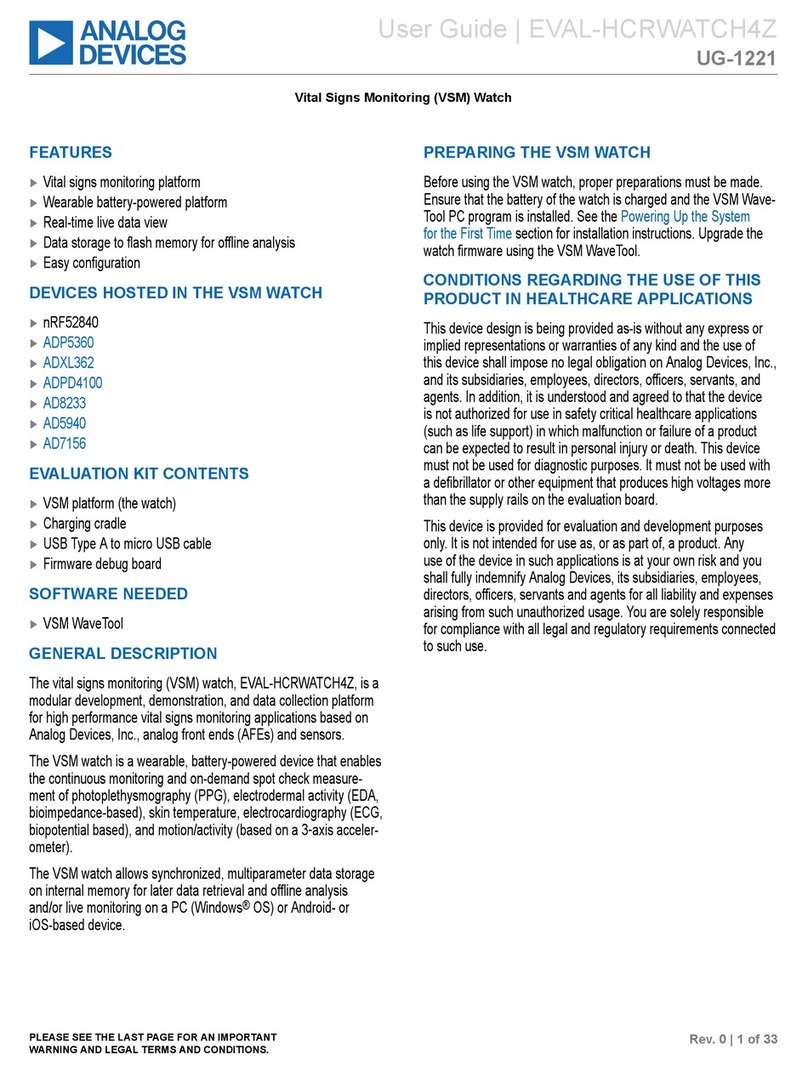
AD5934
Rev. A | Page 2 of 40
TABLE OF CONTENTS
Features .............................................................................................. 1
Applications....................................................................................... 1
General Description......................................................................... 1
Functional Block Diagram .............................................................. 1
Revision History ............................................................................... 3
Specifications..................................................................................... 4
I2C Serial Interface Timing Characteristics .............................. 6
Absolute Maximum Ratings............................................................ 7
ESD Caution.................................................................................. 7
Pin Configuration and Function Descriptions............................. 8
Typical Performance Characteristics ............................................. 9
Teminolog y ...................................................................................... 11
System Description......................................................................... 12
Transmit Stage............................................................................. 13
Frequency Sweep Command Sequence................................... 14
Receive Stage ............................................................................... 14
DFT Operation ........................................................................... 14
Impedance Calculation .................................................................. 15
Magnitude Calculation .............................................................. 15
Gain Factor Calculation ............................................................ 15
Impedance Calculation Using Gain Factor............................. 15
Gain Factor Variation with Frequency .................................... 15
2-Point Calibration..................................................................... 16
2-Point Gain Factor Calculation .............................................. 16
Gain Factor Setup Configuration............................................. 16
Gain Factor Recalculation......................................................... 16
Gain Factor Temperature Variation ......................................... 17
Impedance Error......................................................................... 17
Measuring the Phase Across an Impedance ........................... 19
Performing a Frequency Sweep .................................................... 21
Register Map.................................................................................... 22
Control Register (Register Address 0x80, Register Address
0x81)............................................................................................. 22
Start Frequency Register (Register Address 0x82, Register
Address 0x83, Register Address 0x84)..................................... 23
Frequency Increment Register (Register Address 0x85,
Register Address 0x86, Register Address 0x87) ..................... 23
Number of Increments Register (Register Address 0x88,
Register Address 0x89) .............................................................. 24
Number of Settling Time Cycles Register (Register Address
0x8A, Register Address 0x8B) .................................................. 24
Status Register (Register Address 0x8F).................................. 24
Real and Imaginary Data Registers (16 Bits—Register Address
0x94, Register Address 0x95, Register Address 0x96, Register
Address 0x97) .............................................................................. 25
Serial Bus Interface......................................................................... 26
General I2C Timing.................................................................... 26
Writing/Reading to the AD5934 .............................................. 27
Block Write.................................................................................. 27
Read Operations......................................................................... 28
Typical Applications ....................................................................... 29
Measuring Small Impedances................................................... 29
Biomedical: Noninvasive Blood impedance Measurement.. 30
Sensor/Complex Impedance Measurement............................ 31
Electro-Impedance Spectroscopy............................................. 31
Choosing a Reference for the AD5934 ........................................ 32
Layout and Configuration............................................................. 33
Power Supply Bypassing and Grounding................................ 33
Evaluation Board ............................................................................ 34
Using the AD5934 Evaluation Board....................................... 34
Prototyping Area ........................................................................ 34
Crystal Oscillator (XO) vs. External Clock............................. 34
Schematics................................................................................... 35
Bill Of Materials.......................................................................... 39
Outline Dimensions ....................................................................... 40
Ordering Guide .......................................................................... 40












